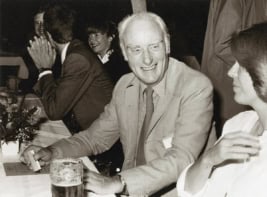
A new department of physics opens this month at the University of Lincoln in the UK, in the latest stage of an ambitious plan to expand the university’s research output. The department forms part of Lincoln’s new school of mathematics and physics, which will be headed by Andrei Zvelindovsky – a computational physicist who was previously at the University of Central Lancashire in Preston. Located at Lincoln’s £150m waterfront campus – just 50 km from the birthplace of Sir Isaac Newton – the school will carry out research and offer undergraduate physics degrees.
The opening is part of a renewed interest in physics in the UK, which has seen the number of students starting undergraduate physics degrees jump by 44% between 2008 and 2013 to nearly 4800. This resurgence is in stark contrast to the period between the 1980s and mid-2000s when several university physics departments closed across the country.
We are investing heavily in interdisciplinary science, including at the interface between life sciences, chemistry and physics
Andrew Hunter, pro vice chancellor of the University of Lincoln
The University of Lincoln, which adopted its current name in 2001, is located in the historic cathedral city of Lincoln. With roots in the arts, humanities and both the applied and social sciences, the university has been branching out into core science in recent years, having already opened schools in chemistry, engineering, life sciences and pharmacy. “We are investing heavily in interdisciplinary science, including at the interface between life sciences, chemistry and physics, and we need a full spectrum of subjects for this to be effective,” says Andrew Hunter, Lincoln’s pro vice chancellor.
Focus on computation
The new school’s research will initially centre on computational physics, including molecular modelling, which is Zvelindovsky’s particular area of interest. He will be joined at Lincoln by Marco Pinna – a former PhD student of his at Central Lancashire – and Manuela Mura, who has a PhD from King’s College London. The department hopes to build links with materials scientists elsewhere in the university, with research into theoretical and applied physics following too.
Zvelindovsky expects Lincoln to have at least six academics in post by next summer, with the long-term aim being to bring this number up to 30. Undergraduate degrees will be provided as well, with three-year Bachelor’s degrees and four-year Master’s degrees in physics and mathematics being offered from next year.
Zvelindovsky expects an intake of 40–50 students in 2015 for both physics and maths, with the number of students rising to more than 100 within a few years. “We will aim for eventual growth to an intake of more than 150 and a total population of more than 400,” he adds. Most of Lincoln’s 12,800 students have traditionally come from the east of England and the East Midlands, but the university is now expanding its reach, with the proportion of international students having risen from 2% to 12% since 2010.



